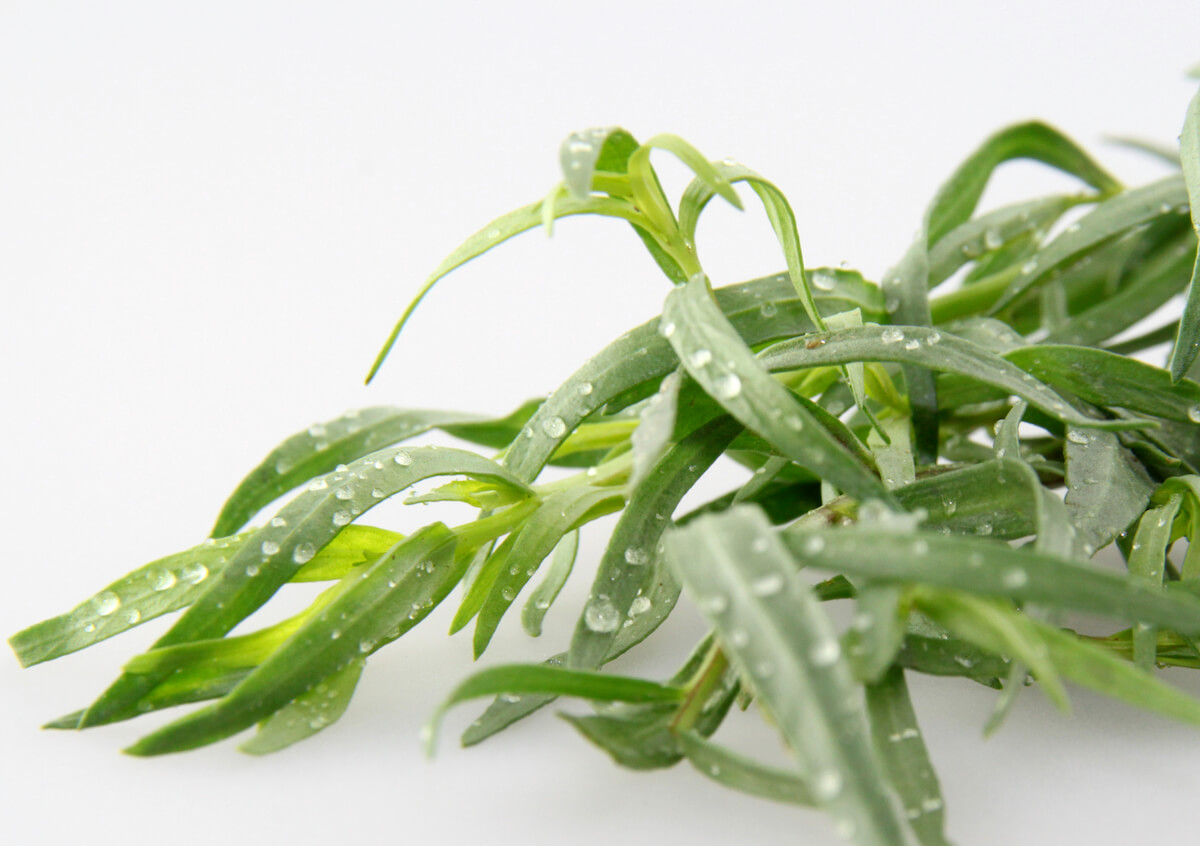Synonyms: Botanical family: origin: Classification: spice shape: flavor: odor: use: Fresh tarragon smells strongly aromatic. The Russian tarragon tastes bitter like chervil, the German tarragon anise-like spicy-bitter. When dried, it is no longer quite as powerful, as some of the volatile aromatic substances are lost during drying. Tarragon should be stored in a well-closing container. The herb is needed for the production of tarragon vinegar, it should not be missing in any béarnaise sauce, and it belongs to the "Fines Herbes" of French cuisine. Tarragon is also used to season many fish dishes, egg dishes, salads, mutton, veal and game dishes, poultry and vegetables. Tarragon is also used for pickling cucumbers, as well as for flavouring liqueurs and making perfumes. tip: Recipe suggestion: knowledge: Botany: Home & Distribution: cultivation & extraction: History: Tarragon
General information
Application
Things to know
 Botanical name:
Botanical name:
Artemisia dracunculus L.
Bertram, Dragon
flowering plants
France, Germany + Southern Europe
herb
leaves, cabbage
spicy, mild-bitter, aniseed
aromatic
sauces, poultry, fish and egg dishes, salad dressings, tartar sauces, potato salads
For stews you can cook the stems with the food
Strawberry butter: Knead 150 g butter until soft, season with salt and mix 1 bunch of chopped tarragon.
Kitchen: Use sparingly because of the intense taste! The aroma intensifies during cooking!
The perennial 60 to 120 cm high, bushy-branched composite plant is a relative of the wormwood, like the mugwort. The tarragon perennial has numerous, unstalked, whole-edged or weakly serrated, lanceolate leaves. The small, inconspicuous flowers stand in whitish green panicles. There are two different forms: Russian tarragon, probably the original wild form, is less aromatic and has a very variable leaf design. It is propagated by seeds. German - also French or Genuine - Tarragon is the highly aromatic form of cultivation, which probably developed from Russian Tarragon. Since it does not or only very little and weakly viable fruit set, it is propagated by cuttings.
Tarragon has its home in Siberia. Today, it is found in its two forms in central and southern Russia, the Balkans, the Mediterranean region, the warmer areas of central Europe, and the Middle East, India, North America and Argentina.
Tarragon, known and appreciated as the "aristocrat among herbs", is not missing in any herb garden and is also widely cultivated in the field. The leaves and branch tips of the herb are harvested before flowering. It comes fresh or dried to the market. Grated and ground, it is available in stores.
Although the spicy tarragon arrived relatively late in Central Europe, it quickly gained a regular place in every herb garden. In addition to its use as a spice, it has also served as a precious medicinal plant since the earliest times, which was said to have a multitude of beneficial effects. Pliny the Elder wrote that a bouquet of tarragon worn in clothing reliably protected against snake bites.
http://de.wikipedia.org/wiki/Estragon







